The Douglas (later McDonnell-Douglas) DC 8 needs little introduction. It's one of aviation's success stories and almost the only first-generation jetliner still in regular revenue service. Boeing's 707 outsold it, but nearly all 707s have been removed from commercial service while the DC-8 continues to fly freight and passengers around the globe. The DC 8 was also more robust than the 707. It could carry more weight, take more punishment and fly faster. Faster? It is not well known that the very first Supersonic airliner was a DC-8. DC8-43 CF-CPG owned by Canadian Pacific Airlines was flown to Mach 1.012 during a pre-delivery test flight on August 21st 1961. Anyone interested in the history of the DC 8 may find as much detail as they wish by searching the internet and their local aviation bookstore.
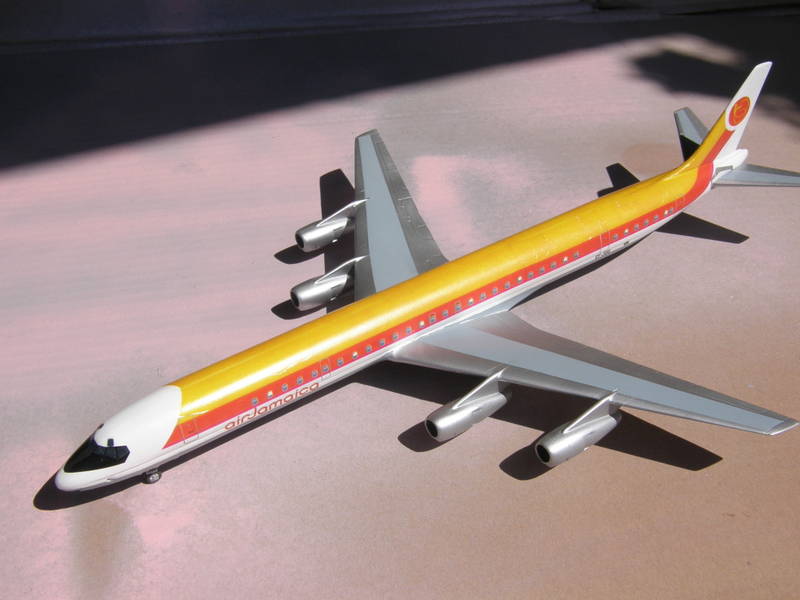
The Kit
Very little has been written on the internet about the Revell 1/144(ish) DC 8-61. This 1967 vintage kit was one of Revell's nicer airliners, with recessed panel lines long before they became fashionable and simple construction. It took until the mid 1990s before Revell released a better airliner. Revell has re-released this kit many times over the years, both as a -61 and -63. The plastic in the box, however has always been for the -61 version with the characteristic teardrop-shaped JT-3D nacelles and over-the-wing pylons. If the modeller wishes to make a -50 series DC-8, this is the simplest conversion going, needing only 4 cuts with a razor saw to complete.
The windows are deeply engraved but not completely open. They can be drilled out and filled with your favourite glazing mixture, or they can be filled and sanded flush to allow for decals. Of the options, I prefer the second. This allows the modeller to portray the many different window configuration options that Douglas gave its customers. Study pictures carefully to ensure your model's windows match the aircraft you have chosen to portray.
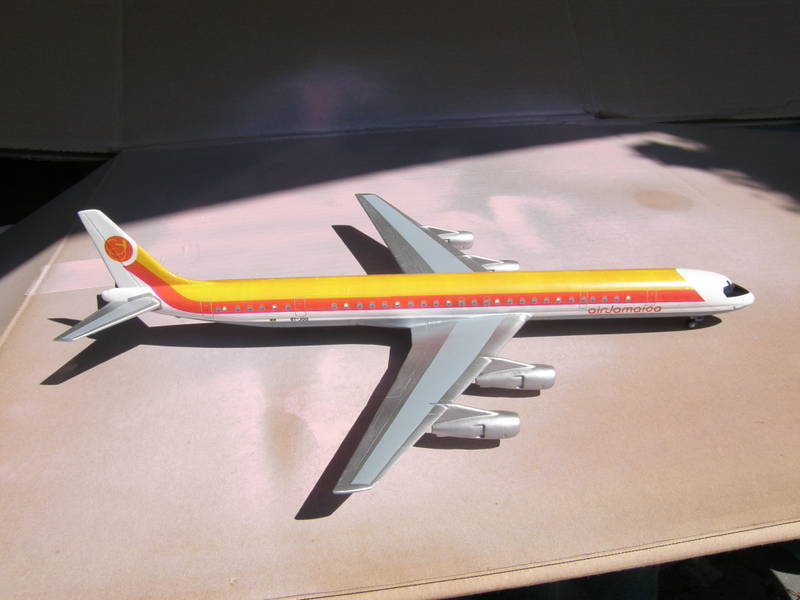
The landing gear is simplistic, the nose leg in particular. The wheels are designed to “spear” onto the axles, which are pointed and far longer than they need to be. Kids in the 1960s were expected to want to roll their models on their wheels, and the model's roots are prominent here. Careful trimming and painting are needed to finish the gear so it looks more like a model. If desired, the open holes on the outboard nosewheel hubs may be covered by small drops of superglue, slivers of styrene rod or tiny punched discs (I went with these in the end). The nose wheels are thinner than they should be and could benefit with being replaced by something out of the spares box. The main gear wheels are slightly better in this regard, being of proper thickness and having an axle on one wheel and a hole in the other for it to glue into which leaves no gaping holes on the outboard hubs. Once the nose leg is prettied up, the gear is adequate for a non-contest shelf-sitter model. The gear doors are the equivalent of a metre or so in thickness; they'd be much better replaced with copies cut from plastic card. Their shape is simple enough so copies will only take a minute or so to make. The gear wells are shallow and devoid of detail. This will only be apparent if the model is picked up and turned over.

Construction
Construction is basic but not totally straightforward. The 6 major portions of the airframe can be glued together in a few minutes. Don't forget to instal some weight in the nose to keep it sitting properly on its gear. Filler will be required. This kit has never had good fit and over the years the moulds have worn. I have never seen a Revell DC-8 that did not have warped wing halves in the box. It's simply a fact of life when dealing with this model. Patience and care will be needed to glue those long seams correctly. “Some modelling skills required” sums up the build. Another wing problem is the very prominent and large ejector pin mark that will be found near the inboard end of each upper and lower wing surface. Why Revell couldn't have put these on the insides of the wings will forever be a mystery. They need careful shaving down and sanding to remove them.
Leave the horizontal stabilisers unglued until final assembly after painting and decalling. Most airline schemes of the 1960s and 70s featured cheatlines that ran from nose to tail, right through the tailplane attachment area. Leaving the stabs off will result in much lower stress levels. The stabilisers fit very well, almost well enough to press fit without glue. The only correction that absolutely must be made is to the elevators; the hinge line as moulded is far too near the trailing edge The elevators' chord should be twice as wide. Filling the existing line and scribing a new one is the work of minutes.
As moulded, the engine pylons leave a gap between the portion on the upper wing and the main pylon. I have tried many different methods over many different builds to fill it without finding any easy solution. Stretched sprue or slivers of plastic card melted in place with “hot” liquid glue is the best option, but the cleanup job on such a prominent area must be done very carefully. Done correctly, it improves the look of the kit immensely.
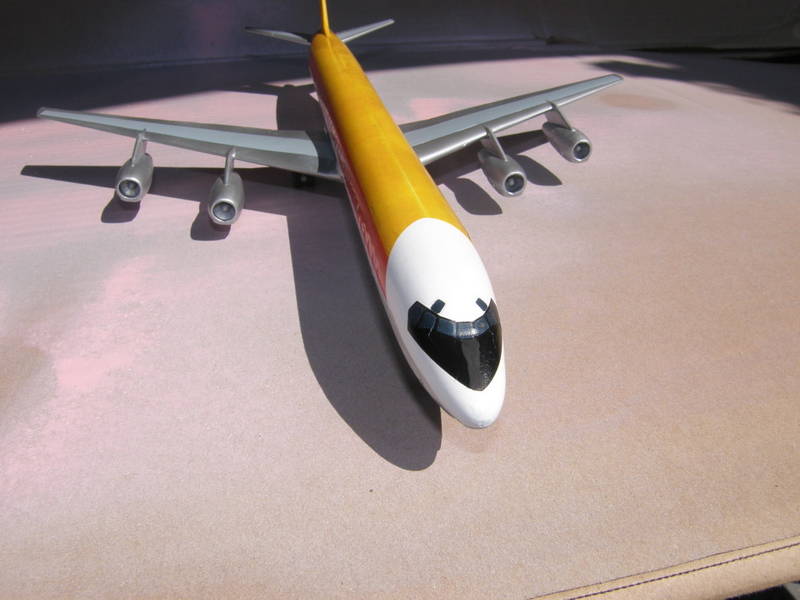
This model fought being built throughout its entire existence. Over time, both wingtips broke off, an engine pylon snapped in half, a large crack developed between the No. 3 engine and the fuselage on the upper wing surface and the fuselage seam split open too many times to count. At times I wondered whether it would ever allow itself to be finished. Most of these disasters took place during various moves while the model was partially built awaiting me to have an inspiration for a colour scheme. I would fix one only to have another piece break. The wingtips in particular were re-attached several times each. It seems obvious that this one will never be a contest contender.
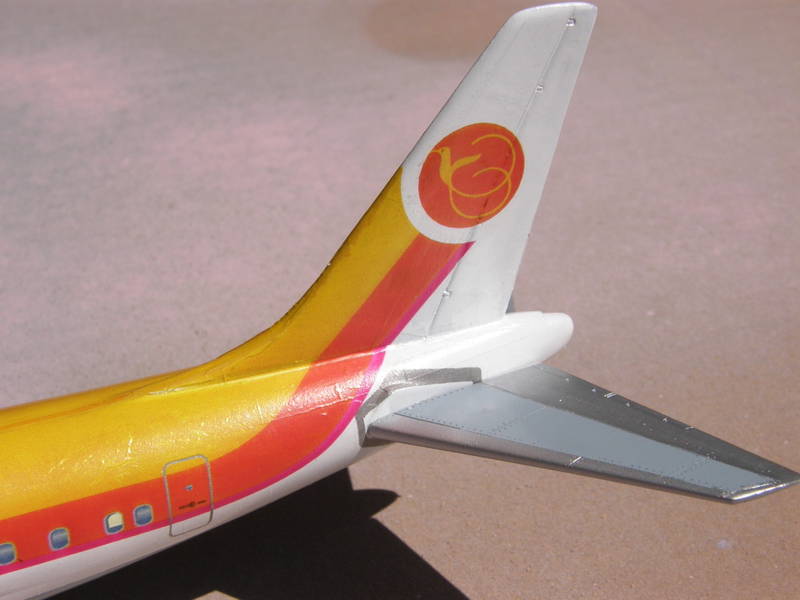
Finishing
The model languished unfinished for almost 15 years until Two Six Decals came to the rescue with their Air Jamaica sheet, allowing a very colourful example to be made.
The basic airframe colours are gloss white uppers, light grey inspar panels and lower fuselage and natural metal leading edges and flying surfaces. The very complete decal sheet provides the rest of the colours. Since this was to be a shelf model, I resorted to spray cans to paint it. Testors gloss white was sprayed overall, then allowed to cure completely. The areas to remain white were masked off and the remainder of the airframe sprayed with Tamiya's Light Ghost grey (which after drying looks too blue. Next time I'll use Gull grey instead). Once the grey was cured, the lower fuselage and inspar areas were masked and the silver sprayed.
The decals also fought being applied. The whole upper fuselage is completely covered with yellow and red decal. The sheet I used was an early laser-printed sheet which broke the fuselage decal into 4 parts, each covering about 1/4 of the fuselage. The decals decided to tear when I tried to coax them into the correct position. I understand that Two Six has redone this sheet in silkscreen printing, and has broken up the decal into smaller pieces which tells me that I am not the only person to have had a challenge applying them. Eventually I prevailed and managed to piece together the tears with few reminders of the trouble they gave me. The fin decals do not wrap around the leading edge, leaving a gap. I touched the area up with yellow paint after the decals had dried. The two halves of the anti glare panel also refused to meet, leaving me a wedge-shaped area to carefully paint black after the decals had dried. I don't know whether this was a result of mis-positioning the windscreen decal, or Revell's nose being shaped differently from Minicraft's. In each case the corrections were easy.
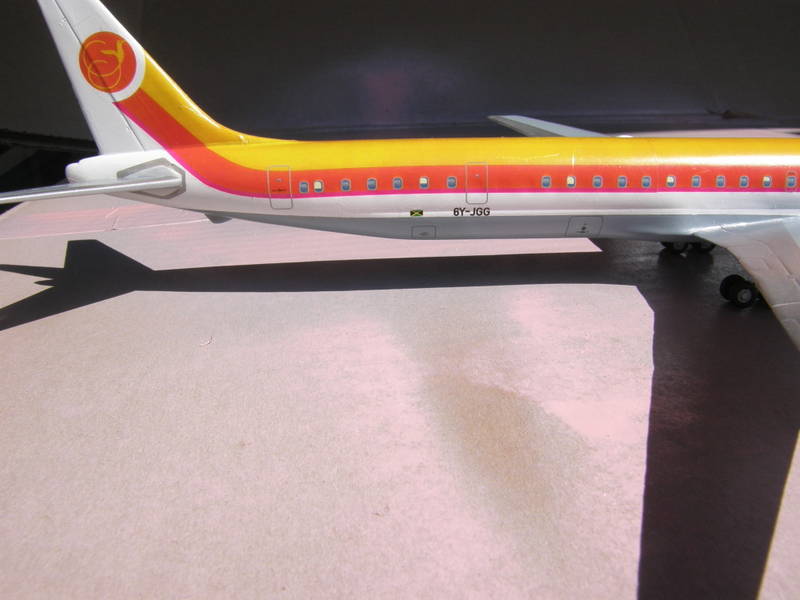
Conclusion
Now that Minicraft has released their jewel of a kit, is there any reason to build this one? I can unreservedly say yes. Even given that it is long out of production, it's a -61 right from the box, so you won't have to worry about finding aftermarket engines (although I can highly recommend Contrails Models' wonderful JT-3s) and the detailing is good enough to display a fancy colour scheme on. The less than precise fit allows for the acquisition of the aforementioned modelling skills and the price (presuming that one did not pay a collector's price) means that making a mistake will not generate nearly as much anguish as would ruining a Minicraft kit.




















